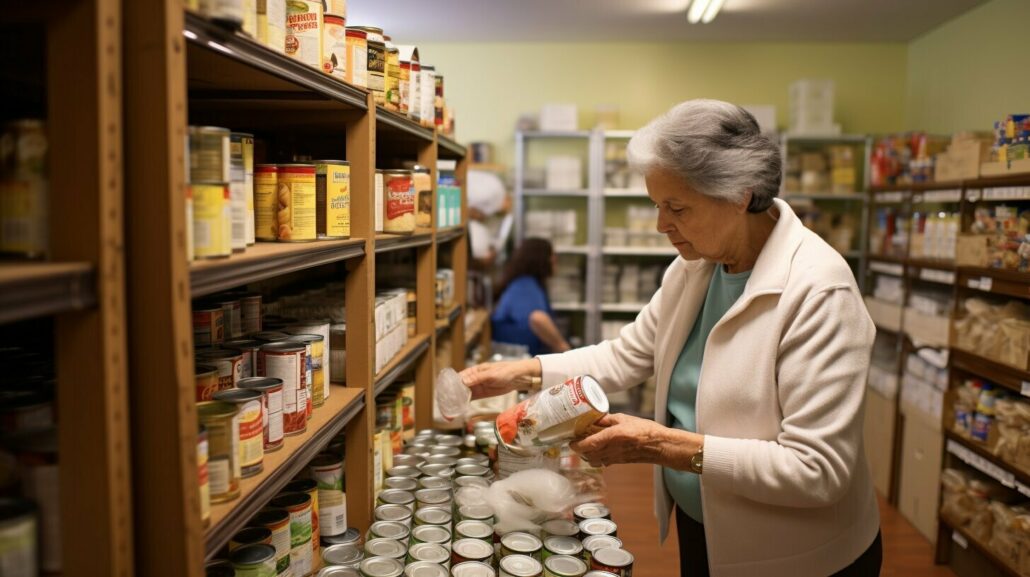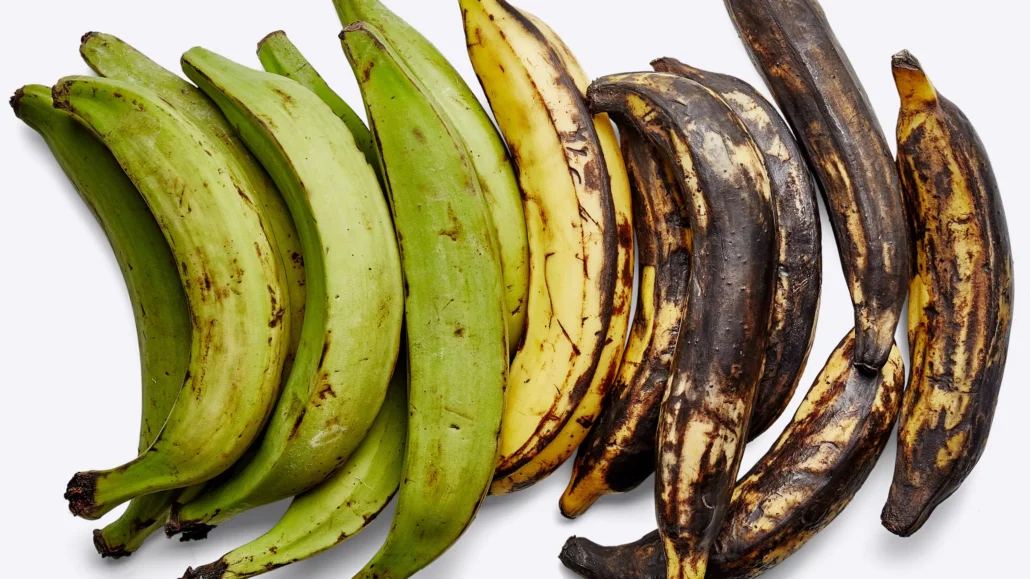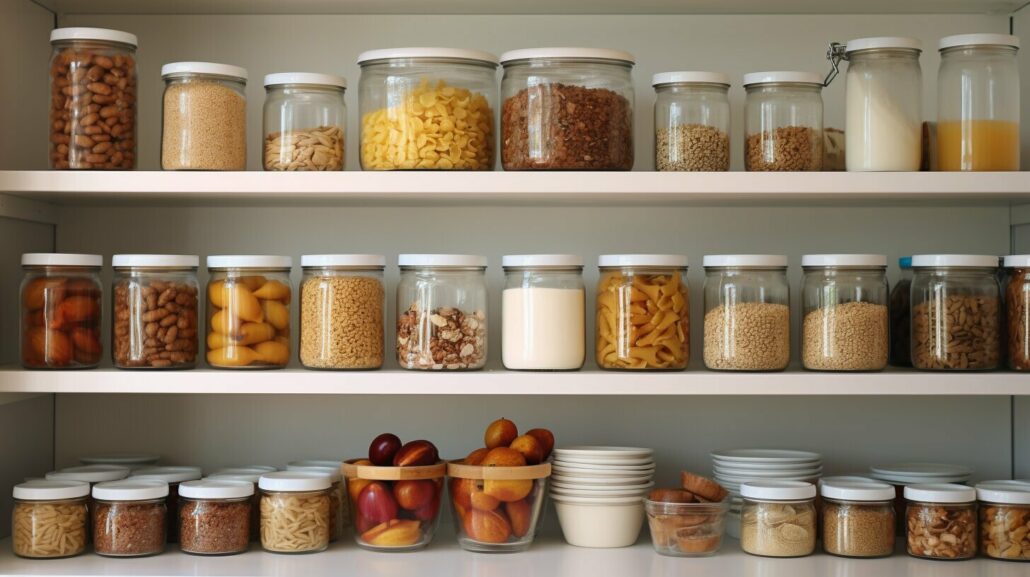Welcome to our Ultimate Guide to Prepping Long Term Food Storage. In this comprehensive article, we will share essential tips, methods, and products to help you stockpile and store food for long-term emergencies.
Key Takeaways:
- Proper storage space is crucial for long-term food storage – ensure it is dry, well-ventilated, and pest-free.
- Select foods with long shelf lives, such as dried beans, rice, canned vegetables and fruits, powdered milk, and canned meats.
- Use suitable containers and packaging techniques to preserve the quality and shelf life of the stored food.
- Manage the cost of assembling a year’s supply of food through bulk buying, shopping sales, and online purchasing.
- Ensure adequate calories and balanced nutrition by storing a variety of foods and having access to clean water.
Now that you have a glimpse of the valuable information we will be sharing, let’s dive into the details of prepping long-term food storage. Whether you are preparing for potential food shortages or simply want to be self-sufficient, this guide will equip you with the knowledge and strategies to build a reliable food storage system.
Importance of a Suitable Storage Space
Creating a suitable storage space for your long-term food supply is crucial for maintaining its quality and safety. Let’s explore some key considerations for choosing the right location to store your emergency food.
First and foremost, you want to find a dry area. Moisture can lead to mold and bacterial growth, which can spoil your food and make it unsafe to consume. Look for a space that is free from leaks or excessive humidity. If you’re storing your food in a basement or cellar, consider using dehumidifiers to keep the area dry.
Ventilation is another important factor. Proper airflow helps prevent the buildup of odors and gases, which can affect the taste and quality of your stored food. Make sure the storage space has adequate ventilation, either through natural ventilation or with the help of fans or vents.
Lastly, you want to keep pests at bay. Insects, rodents, and other critters can quickly ruin your food supply. Choose a storage area that is well-sealed to prevent unwanted intruders. Use airtight containers or bins to store your food, and consider using pest control measures such as traps or repellents to further protect your supplies.
By selecting a suitable storage space that is dry, well-ventilated, and pest-free, you can ensure the longevity and quality of your long-term food supply. Remember, proper storage is an essential part of prepping for emergencies and food shortages.
Table 1: Key Considerations for Choosing a Suitable Storage Space
| Consideration | Description |
|---|---|
| Dryness | Avoid areas with leaks or excessive humidity; consider using dehumidifiers. |
| Ventilation | Ensure proper airflow to prevent odors and gases from building up. |
| Pest Control | Select a well-sealed area and use airtight containers to keep pests out. |
“A suitable storage space is the foundation of long-term food storage. It protects your investment and ensures that your emergency supply will be safe and ready when you need it most.” – FoodStorage.com
Selecting the Right Foods for Long-Term Storage
Stocking up on the right foods is essential for building a long-term food supply. Let’s take a look at some of the best foods that can be stored for extended periods without compromising their nutritional value.
1. Dried beans: With an impressive shelf life of up to 30 years, dried beans are a great source of protein, fiber, and essential minerals. They are versatile and can be used in a variety of dishes such as soups, stews, and casseroles.
2. Rice: A staple in many households, rice can be stored for up to 25 years when properly packaged. It provides carbohydrates and is a filling addition to meals. Brown rice is more nutritious but has a shorter shelf life compared to white rice.
3. Canned vegetables and fruits: These provide essential vitamins and minerals and can be stored for up to 5 years. Opt for low-sodium varieties and choose fruits packed in water or their own juice to avoid added sugars.
4. Powdered milk: A good source of calcium and vitamin D, powdered milk can last up to 20 years when stored in a cool, dry place. It is a convenient option for adding milk to recipes or reconstituting for drinking.
5. Canned meats: Canned meats like tuna, chicken, and spam have a shelf life of around 2-5 years. They are a valuable source of protein and can be used in sandwiches, salads, or added to various recipes.
| Food | Shelf Life (approx.) | Nutritional Benefits |
|---|---|---|
| Dried Beans | Up to 30 years | Protein, fiber, essential minerals |
| Rice | Up to 25 years | Carbohydrates, filling |
| Canned Vegetables and Fruits | Up to 5 years | Vitamins, minerals |
| Powdered Milk | Up to 20 years | Calcium, vitamin D |
| Canned Meats | 2-5 years | Protein |
Remember, while these foods have long shelf lives, it’s important to store them properly in a cool, dry place away from direct sunlight. Regularly check for any signs of spoilage or damage and rotate your stock to ensure freshness. By selecting the right foods for long-term storage, you can be prepared for unexpected situations and have peace of mind knowing you have a reliable food supply.
Packaging and Repackaging for Long Term Storage
Proper packaging and repackaging are key to ensuring the longevity of your stored food. Let’s explore some effective methods and containers for long-term food storage.
Choosing the Right Containers
When it comes to selecting containers for long-term food storage, there are a few important factors to consider. First, opt for containers that are made of food-grade materials such as high-density polyethylene (HDPE) or glass. These materials are durable, non-toxic, and resistant to moisture, pests, and UV light.
Next, consider the size of the containers. It’s best to store food in smaller quantities to minimize the risk of spoilage. Look for containers that are appropriately sized for the type and quantity of food you plan to store. This will also make it easier to rotate your stock and consume food before it expires.
| Container Type | Advantages | Disadvantages |
|---|---|---|
| Mylar Bags | – Lightweight and space-efficient – Provide an additional layer of protection when used in conjunction with food-grade buckets or bins | – Not as durable as other container types – Can be punctured if mishandled |
| Food-Grade Plastic Buckets | – Sturdy and stackable – Provide excellent protection against pests and moisture | – Can take up more space than other containers – May require additional sealing with Mylar bags or lids |
| Glass Jars | – Non-toxic and resistant to pests – Allows for easy visibility of stored food | – More prone to breakage than other container types – Heavier and less space-efficient |
Effective Methods for Packaging
Once you have chosen the right containers, it’s important to properly package your food for long-term storage. Here are a few effective methods:
- Vacuum Sealing: Vacuum sealers remove the air from the packaging, creating a tight seal that helps to extend the shelf life of the food. This method is ideal for storing dry goods like rice, beans, and dehydrated fruits and vegetables.
- Oxygen Absorbers: Placing oxygen absorbers in your sealed containers can help to prevent the growth of bacteria and mold. These small packets absorb oxygen, creating an oxygen-free environment that inhibits spoilage.
- Freezing: Freezing is a great option for preserving certain foods, such as meat and dairy products. However, it’s important to package foods properly with airtight, moisture-resistant packaging to avoid freezer burn.
Remember to label each container with the contents and the date of storage. This will help you keep track of your inventory and ensure that you rotate your stock to consume the oldest items first.
By following these packaging and repackaging methods, along with selecting the right containers, you can confidently store your food for the long term, ensuring that it remains fresh and safe to consume when you need it most.
Managing the Cost of Long Term Food Storage
Building a long-term food supply can be a significant investment, but there are ways to manage the cost without compromising on quality or quantity. Let’s explore some cost-saving strategies for your food storage plan.
Buying in bulk is one of the most effective ways to save money when assembling a year’s supply of food. This allows you to take advantage of discounts offered for larger quantities. Look for wholesalers or online retailers that specialize in bulk food sales. By purchasing staple items like rice, beans, and pasta in bulk, you can save significantly on the cost per pound. Just make sure you have proper storage containers to keep the food fresh and protected.
Another strategy is to shop sales and take advantage of discounted prices. Keep an eye out for promotions, clearance sales, and coupons at your local grocery stores. Stock up on non-perishable items when they are on sale and plan your purchases accordingly. By being strategic in your shopping, you can save money while still building a well-rounded food supply.
Online purchasing can also be a cost-effective way to acquire long-term food storage items. Many online retailers offer competitive prices and the convenience of doorstep delivery. Compare prices from different websites and read reviews to ensure you are getting the best deal. Don’t forget to factor in shipping costs when making your calculations to determine the most cost-effective option.
Cost-Saving Strategies for Long Term Food Storage
- Buy in bulk to take advantage of discounts and lower cost per pound.
- Shop sales and use coupons to save money on non-perishable items.
- Consider online purchasing for competitive prices and convenient delivery.
- Compare prices and read reviews to ensure you are getting the best deal.
By implementing these cost-saving strategies, you can build a long-term food supply that is both affordable and reliable. Remember to rotate your stock regularly to ensure freshness and use your stored food in your everyday meals to minimize waste. With careful planning and smart shopping, you can be well-prepared for any future emergency or food shortage.
| Cost-Saving Strategy | Advantages |
|---|---|
| Buying in bulk | – Discounted prices for larger quantities – Cost per pound savings – Long-term supply coverage |
| Shopping sales | – Take advantage of discounted prices – Plan purchases accordingly – Save money on non-perishable items |
| Online purchasing | – Competitive prices – Convenient doorstep delivery – Wide range of options |
Ensuring Adequate Calories and Balanced Nutrition
In a long-term emergency situation, it’s crucial to ensure you have enough calories and a balanced diet to sustain your energy and health. Let’s dive into some key considerations for achieving adequate nutrition in your food storage plan.
First and foremost, it’s important to focus on storing foods that are rich in calories and nutrients. Dried beans, rice, and canned meats are excellent choices as they provide a good source of protein and carbohydrates. These foods can serve as the foundation of your meals, providing sustenance and energy during challenging times.
Additionally, including a variety of foods in your long-term food storage is essential for achieving balanced nutrition. Canned vegetables and fruits are great options as they retain their nutritional value and can be incorporated into a range of dishes. Powdered milk is another valuable addition, providing a source of calcium and essential vitamins.
To ensure you’re meeting your nutritional needs, consider creating a meal plan and incorporating a mix of different food groups. This will help you achieve a well-rounded diet and prevent nutrient deficiencies. As you plan your meals, keep in mind the recommended daily intake of macronutrients, vitamins, and minerals. Aim to include a balance of carbohydrates, proteins, healthy fats, and a variety of fruits and vegetables.
| Protein | Fats | Carbohydrates | Vitamins and Minerals |
|---|---|---|---|
| Canned meats, beans, nuts | Oils, nuts, seeds | Rice, pasta, grains | Canned fruits, vegetables, powdered milk |
Remember, it’s important to store enough calories to sustain your energy levels during a long-term emergency. Consider consulting with a nutritionist or using online calculators to determine your daily caloric needs based on your age, sex, and activity level. This will help you plan and store an adequate amount of food to meet your energy requirements.
By incorporating these considerations into your food storage plan, you can ensure that you and your loved ones have the necessary calories and balanced nutrition to thrive during challenging times. Stay prepared, stay nourished.
Access to Clean Water
While food is essential for survival, access to clean water is equally crucial. Let’s explore some practical ways to ensure you have a reliable source of clean water to complement your long-term food storage.
1. Water Storage: One of the most effective ways to ensure access to clean water is by storing an adequate supply. It is recommended to store at least one gallon of water per person, per day, for drinking and sanitation purposes. This should be enough to sustain you during emergencies or periods of water scarcity.
2. Water Filtration: Investing in a reliable water filtration system is essential for long-term water storage. There are various options available, such as carbon filters, ceramic filters, and reverse osmosis systems, that can effectively remove contaminants and make water safe for consumption. Be sure to research and choose a filtration system that suits your specific needs.
3. Rainwater Harvesting: Another sustainable option is to collect rainwater for future use. Set up a rainwater harvesting system by installing rain barrels or tanks to collect rainwater from rooftops. This water can be used for non-potable purposes such as watering plants or flushing toilets. However, it is important to filter and treat rainwater before consuming it.
| Water Source | Advantages | Disadvantages |
|---|---|---|
| Tap Water | Convenient and readily available | Potential contaminants |
| Bottled Water | Easy to store and portable | Expensive and limited supply |
| Rainwater | Sustainable and free | Requires filtration and treatment |
| Water Filtration Systems | Effectively removes contaminants | Initial cost and maintenance |
Remember, water is essential for hydration, food preparation, and hygiene. It is important to have multiple sources of clean water and to regularly check and maintain your water storage and filtration systems. By ensuring access to clean water, you can better protect yourself and your loved ones during emergencies, complementing your long-term food storage efforts.
Food Sustainability After a Collapse
After a collapse or prolonged emergency, sustainable food practices become vital for long-term survival. Let’s explore strategies for maintaining food sustainability and self-sufficiency in such challenging circumstances.
One key aspect of food sustainability after a collapse is establishing a reliable source of fresh produce. Setting up a backyard or community garden can provide a steady supply of fruits and vegetables. By utilizing organic farming techniques and seed saving, we can ensure a renewable source of nutritious food. With careful planning and crop rotation, we can maximize yields and minimize the risk of pests and diseases.
In addition to gardening, preserving food becomes crucial. Canning and dehydrating fruits, vegetables, and meats allow us to store food for extended periods without refrigeration. By preserving a variety of foods, we can maintain a diverse and balanced diet even in challenging conditions. Properly stored preserved foods can last for years, providing sustenance during times of scarcity.
| Preservation Method | Foods Suited for Preservation |
|---|---|
| Canning | Fruits, vegetables, meats |
| Dehydrating | Fruits, vegetables, meats, herbs |
| Freezing | Fruits, vegetables, meats, dairy |
| Fermenting | Vegetables, dairy, condiments |
Furthermore, raising backyard chickens or cultivating small livestock can provide a sustainable source of protein and eggs. These animals can be fed with scraps from the garden or kitchen, reducing waste and ensuring a continuous supply of fresh eggs and meat. Additionally, exploring traditional food preservation methods such as fermentation allows for the creation of homemade probiotics, enhancing both nutrition and gut health.
By adopting these food sustainability practices, we can become more self-sufficient and resilient in the face of uncertain circumstances. A combination of gardening, food preservation, and animal husbandry enables us to maintain a steady supply of nutritious food, ensuring our survival and well-being in challenging times.
Planning and Organization in Food Storage
Proper planning and organization are essential for a successful long-term food storage plan. In this section, we’ll discuss strategies to help you stay organized, manage inventory, and ensure the freshness of your stored food.
One effective strategy for planning and organizing your food storage is to create an inventory system. This can be as simple as a spreadsheet or as elaborate as a dedicated storage management software. By keeping track of the quantity, type, and expiration dates of your stored food, you can easily rotate and consume older items before they expire, ensuring that nothing goes to waste. Use columns to list each item, including key details such as the purchase date, expiration date, and quantity.
Another helpful tip is to label and categorize your food storage containers. This will make it easier to locate specific items when you need them. Consider using color-coded labels or stickers to identify different food categories, such as grains, proteins, and canned goods. By keeping similar items together, you can maintain an organized storage space and quickly find what you’re looking for.
| Category | Color Code |
|---|---|
| Grains | Green |
| Proteins | Blue |
| Canned Goods | Red |
Additionally, consider implementing a first-in, first-out (FIFO) system to ensure that you are consuming the oldest items first. This helps to maintain the freshness and quality of your stored food. As you replenish your supply, place the newly purchased items towards the back of the storage space, pushing the older items to the front for easy access. By consistently following this rotation system, you’ll minimize the risk of food waste and ensure that your stockpile remains up-to-date.
By implementing these planning and organization tips, you’ll be well-prepared for any emergency situation. Remember to regularly review and update your inventory, restock as necessary, and adjust your storage plan based on changing needs. With a well-managed food storage system, you’ll have peace of mind knowing that you’re ready for whatever the future may bring.
Conclusion
Congratulations! You’ve now gained valuable insights into prepping long-term food storage. By following the tips and methods outlined in this guide, you can confidently build a robust food supply to sustain you through any situation.
In summary, it is important to have a suitable storage space that is dry, well-ventilated, and pest-free. Consider storing foods with long shelf lives, such as dried beans, rice, canned vegetables, canned fruits, powdered milk, and canned meats. Properly packaging and repackaging your food in suitable containers will help preserve its quality and shelf life.
Managing the cost of assembling a year’s supply of food can be achieved through bulk buying, shopping sales, and utilizing online purchasing. Remember to store enough calories and maintain a balanced nutrition across different food items. Access to clean water is vital, so make sure to implement methods for ensuring a safe water supply and consider water storage options.
In addition, the article delves into the concept of food sustainability after a collapse or prolonged emergency situation. Self-sufficiency, gardening, and preserving food are essential elements to consider for long-term food security. Lastly, planning and organization play a crucial role in successful long-term food storage. Inventory management, rotation, and tracking expiration dates will help ensure optimal efficiency and readiness.
| Key Points: |
|---|
| Have a suitable storage space |
| Store foods with long shelf lives |
| Properly package and repackage |
| Manage the cost through strategic purchasing |
| Ensure enough calories and balanced nutrition |
| Access to clean water is crucial |
| Consider food sustainability after a collapse |
| Plan and organize your food storage |
Additional Resources and Recommendations
- Books: “The Prepper’s Cookbook” by Tess Pennington
- Websites: prepperswill.com, readiness-plan.com
- Products: food-grade storage containers, water purification systems, gardening supplies
Remember, being prepared for emergencies is essential for the well-being of you and your loved ones. Start prepping your long-term food storage today and enjoy the peace of mind that comes with knowing you are ready for any situation that may arise.
Additional Resources and Recommendations
For further information and resources on prepping long-term food storage, check out our recommended books, websites, and products that can help you expand your knowledge and enhance your preparedness journey.
If you’re looking for comprehensive guides on long-term food storage, we recommend “The Prepper’s Pantry” by Daisy Luther and “Emergency Food Storage & Survival Handbook” by Peggy Layton. These books provide in-depth information on selecting and storing food for extended periods, along with practical tips and strategies to ensure you’re well-prepared.
When it comes to online resources, the website “Preparedness Mama” offers a wealth of information on food storage, emergency preparedness, and self-sufficiency. Their articles cover various aspects of long-term food storage, including storage methods, menu planning, and preserving techniques.
To further enhance your preparedness, consider investing in high-quality food storage products. Wise Company and Augason Farms offer a wide range of long-term food storage options, from individual freeze-dried meals to survival kits. These products are specifically designed to have long shelf lives and provide essential nutrients during emergencies.
Remember, being prepared for long-term food storage is crucial for ensuring the well-being of you and your loved ones during uncertain times. By utilizing these additional resources and recommendations, you can gain the knowledge and tools necessary to create a robust and sustainable food storage plan.
FAQ
Q: What are the key considerations for prepping long-term food storage?
A: The key considerations for prepping long-term food storage include selecting a suitable storage space, choosing the right foods with long shelf lives, properly packaging and repackaging the food, managing the cost of assembling a year’s supply, ensuring adequate calories and balanced nutrition, having access to clean water, planning for food sustainability after a collapse, and organizing and managing the stored food.
Q: What should I look for in a suitable storage space?
A: A suitable storage space for long-term food storage should be dry, well-ventilated, and pest-free. It is important to keep the food away from moisture, extreme temperatures, and sunlight to maintain its quality and shelf life.
Q: What are the recommended foods for long-term storage?
A: Recommended foods for long-term storage include dried beans, rice, canned vegetables and fruits, powdered milk, and canned meats. These foods have a long shelf life and provide essential nutrients.
Q: How should I package and repackage the food for long-term storage?
A: Proper packaging and repackaging of food is crucial for long-term storage. It is recommended to use suitable containers that are airtight and moisture-resistant. Repackaging foods in smaller portions can also help with portion control and minimizing waste.
Q: How can I manage the cost of assembling a year’s supply of food?
A: The cost of assembling a year’s supply of food can be managed through bulk buying, shopping sales, and utilizing online purchasing. Buying in bulk and taking advantage of sales can significantly lower the cost per unit. Online purchasing often offers competitive prices and discounts.
Q: How do I ensure adequate calories and balanced nutrition in long-term food storage?
A: To ensure adequate calories and balanced nutrition, it is important to store enough calories to meet daily energy needs. Additionally, balance the nutrition across different food groups, including grains, legumes, fruits, vegetables, and protein sources.
Q: How can I have access to clean water for long-term food storage?
A: Having access to clean water is essential for long-term food storage. It is recommended to store an emergency supply of water and explore methods for purifying water, such as water filters, boiling, or water purification tablets.
Q: What should I consider for food sustainability after a collapse?
A: Food sustainability after a collapse involves self-sufficiency, gardening, and preserving food. Learning how to grow your own food and preserve it through canning, drying, or freezing can help sustain long-term food security.
Q: How important is planning and organization in food storage?
A: Planning and organization are crucial in successful long-term food storage. It helps with inventory management, rotation, and tracking expiration dates to prevent food waste and ensure a fresh and reliable food supply.










